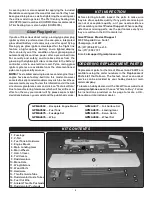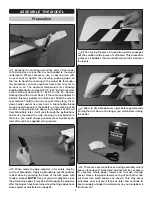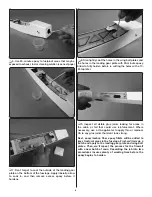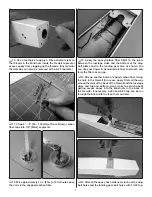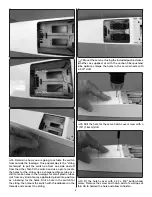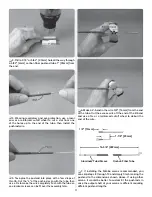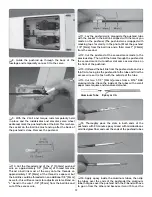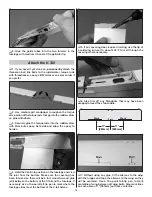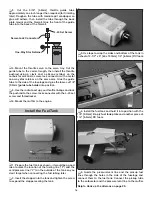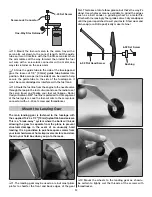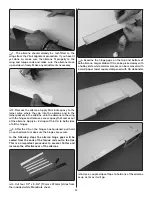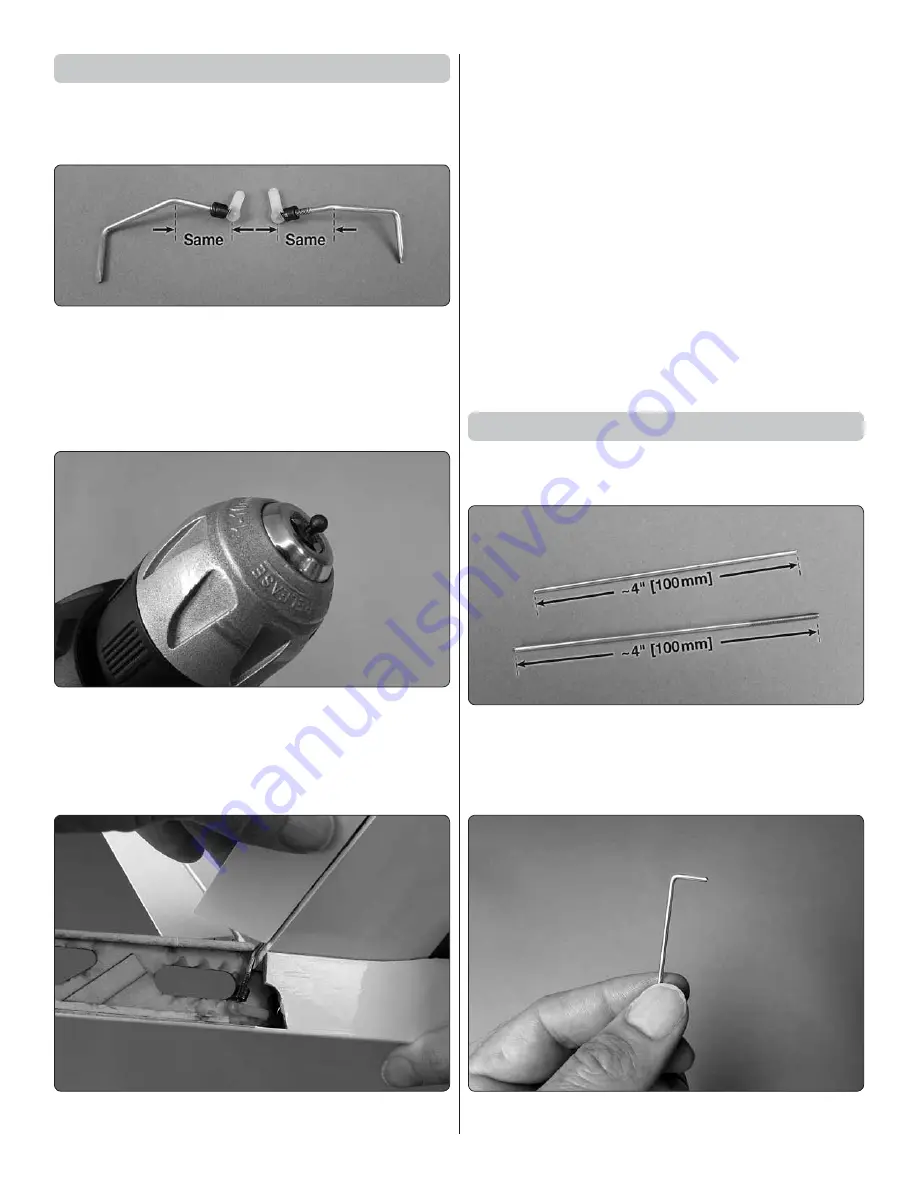
10
Test Fit the V-Tail
Do not use any glue until instructed to do so—we’re going
to go as far as possible fi tting up the V-tail and hooking
up the pushrods before permanently gluing anything in.
❏
1.
Temporarily
thread the ball link balls onto the
ruddervator torque rods. Examine the ball link balls to
make sure there is no burr or a sharp point on the tip. If
necessary, use a metal fi le to grind off the protrusion, then
snap the ball links onto the balls. Also make sure the ball
link balls are the same length. If necessary, shorten the
longer torque rod to match the short one.
❏
2. Make sure the ball links can move freely and are not
too tight. If they are too tight, chuck the base of the ball in
a hand drill (or, try another ball link if you have a supply of
your own). Polish the ball with metal polish and a cloth or
other mildly abrasive product until the ball links swivel on
the balls smoothly. Temporarily reassemble and set aside.
❏
3. Temporarily fi t the V-tail to the fuselage (being certain
to key the tab at the front of the V-tail center rib into the
notch in the former and the tab on the bottom into the
slot in the base). Without glue, test-fi t the ruddervators
with the hinges, torque rods and ball links. Make sure
the ruddervators move smoothly and the ball links don’t
interfere with anything. Make any adjustments necessary.
❏
4. If you haven’t yet done so, program your radio for
V-tail
mixing.
Now it’s time to decide what kind of pushrods you are
going to use—either the included rod-and-tube setup,
or an optional 5/32" [4mm] carbon fi ber pushrods (not
included). Most pilots use the standard wire pushrods,
but some pylon racers prefer carbon fi ber pushrods for
ultimate precision.
If using the pushrods included, skip to
Make the Wire
Pushrods
on page 13. If using carbon fi ber pushrods,
follow these instructions, or use your preferred method to
make the pushrods:
Make the Carbon Fiber Pushrods
The instructions illustrate making one pushrod at a time,
but you could make them simultaneously.
❏
1. Cut two, approximately 4" [100mm] segments from
the threaded end of one of the long pushrod wires so you
have a threaded piece and a non-threaded piece. Clean
the wires with denatured alcohol, then roughen with
medium-grit sandpaper so glue will adhere.
❏
2. Make a 90° “L-bend” as
sharp
as you can on one of
the non-threaded wires.




